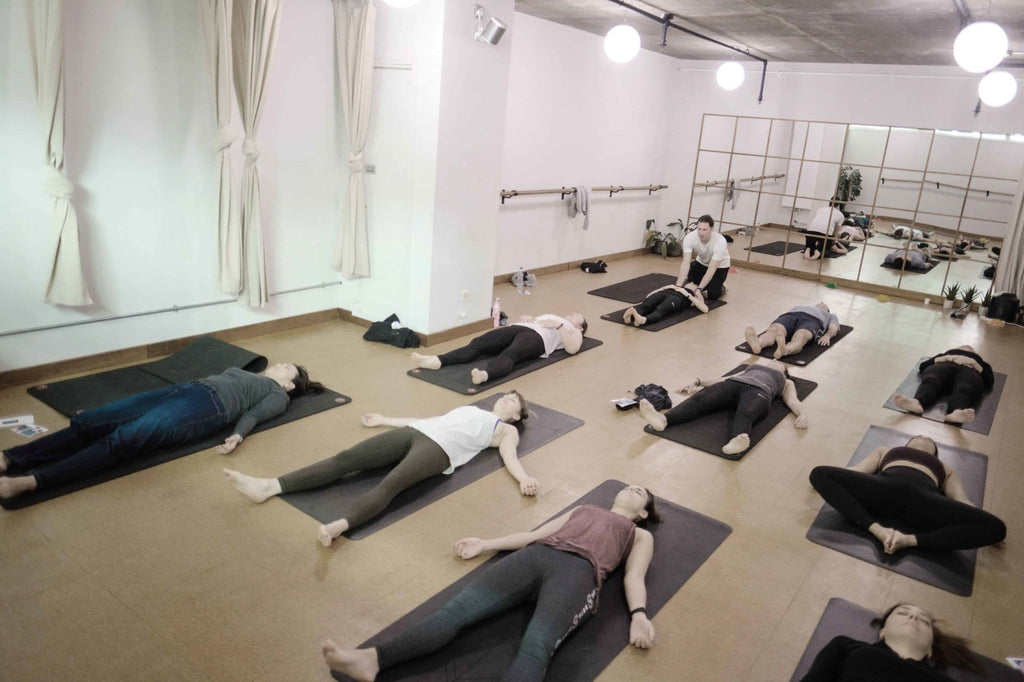Everyone loves sleep. It’s how many of us spend eight hours of our 24-hour days, and according to science, it’s a great way to stay healthy. But there’s more than one way to sleep. When we dream, we’re often in a state of REM sleep (REM stands for ‘rapid eye movement’), and between cycles, we’re in non-REM sleep. In the world of yoga, there’s something called ‘yogic sleep’.
Known as Nidra Yoga, yogic sleep is an excellent way to rest, relax and recuperate after a stressful day, without actually falling fast asleep.
Here’s what you need to know about the healing power of Yoga Nidra.
First, let’s define ‘Nidra Yoga’
Much like Asana Yoga or Hatha Yoga, Nidra Yoga is another ‘style’ of yoga, only instead of fast flows and deep stretches, it consists of guided meditation and deep breathing with the sole purpose of unlocking stress and tension.
Many professional yogis deem Nidra Yoga the most powerful tool to achieve complete relaxation, and a daily Nidra Yoga practice can be instrumental in the improvement of anxiety, depression and a person’s overall wellbeing.
How does Nidra Yoga differ from other types of meditation?
Nidra Yoga differs from other forms of meditation because, quite simply, it is always a guided practice. While there are guided meditations, Nidra Yoga is rarely performed without guidance and instead of consciously placing the attention on one area (ie breathing or mantra), yogic sleep takes the attention to specific places around the body with the aim of relaxing each part of the body, one by one.
The healing power of yogic sleep
Many yogis will tell you Shavasana is the most important pose in yoga, and for good reason. Performed daily, this pose alone will help you maintain a healthy and happy mindset, and it will greatly reduce inflammation in the body. In a similar vein, yogic sleep will do much the same thing. This practice will undoubtedly ‘heal’ you in many ways…
- Nidra Yoga helps in healing trauma
The practice of yogic sleep aims to bring us face to face with our negative emotions and feelings that are all too often ignored in our everyday lives. By making space to process these feelings, we can consciously alleviate the detrimental side effects negativity causes on the body and begin to find resolution.
- It heals stress
Oftentimes, our bodies exist in a ‘fight’ or ‘flight’ mode, and given how stimulating our day-to-day lives are today, we exist in a state of ‘fight’ more often that most of us would like.
Inevitably, ‘fight’ mode causes stress and, in consistent doses, stress is bad for us. Nidra Yoga, however, promotes a deep state of relaxation and helps calm the nervous system, which reduces inflammation across the body and leads to better health.
- Yogic sleep improves regular sleep
Many yogis who practice Nidra Yoga claim that 45 minutes of yogic sleep feels like three long hours of deep regular sleep. Unfortunately, there’s no science behind this, but nonetheless, Nidra Yoga helps promote complete rest and relaxation.
For those suffering from insomnia, a daily Nidra Yoga practice may help wind you down into a deep state of regular sleep, improving the issues that often cause us to stay awake at night, like anxiety, depression and other psychological problems.
- It causes alpha and theta brain waves
Nidra Yoga lovers often experience both delta and theta brain waves, which cause you to tap into your creativity, intuition and health. Delta waves are the slowest waves, which are oftentimes experienced during times of dreamless sleep. Theta waves, on the other hand, are experienced when a person is in a deep state of conscious relaxation.
With guidance, then, yogic sleep helps you reach the deepest state of sleep while remaining conscious, which means you can actively choose the specific areas of your mind and body to focus on.
- It reduces symptoms associated with Type 2 Diabetes
Nidra Yoga helps reduce the symptoms of Type 2 Diabetes. This practice helps control blood glucose levels, lowering blood pressure and cholesterol. In short, this reduces the symptoms associated with diabetes.
Nidra Yoga at home
Chances are, your yoga practice has transformed from in-studio practice to on-the-living-room-floor practice, with a child stationed between your legs. We feel your pain. Finding time for yourself through COVID-19 is proving rather difficult, especially when many of us are working, living and existing between the four walls of our homes.
Taking time out of your day to perform Nidra Yoga, however, may just be the thing you need to keep your body healthy and your mind happy. To do this, designate a space in your home for yourself, and design it in such a way that it inspires calmness and peace. With this, you can plug into some useful Nidra Yoga YouTube channels and let and expert guide you into yogic sleep. Here are some channels worth exploring:
- Yoga Nidra 20 Minute Guided Meditation
- Yoga Nidra For Sleep – Powerful Guided Meditation to Fall Asleep Fast
- Pure Blissful Relaxation and Stress Relief / Yoga Nidra Meditation / Mindful Movement
- Yoga Nidra 15 Minute Full Body Relaxation
Most importantly, yogic sleep helps you learn about yourself
Above all, Nidra Yoga does one thing for us: it gives us the space and time we need to sit with ourselves and get comfortable. Through emotional confrontation and physical stress release, this practice is arguably the most powerful form of yoga there is, and performed daily, it offers life-altering changes in how we think, how we act and how we connect with others.


Leave a Reply